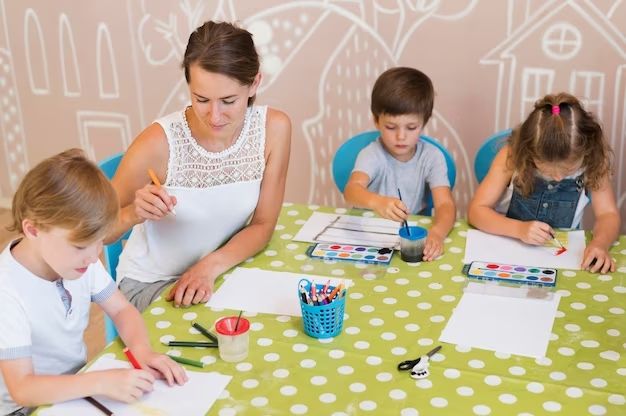In the lively world of preschoolers, filled with laughter, games, and endless curiosity, the concept of mindfulness might appear intricate. However, incorporating mindfulness practices into the daily routine of preschoolers can bring forth a myriad of benefits. These practices offer young minds valuable tools to navigate their emotions, cultivate resilience, and establish a foundation for lifelong well-being. This step-by-step guide aims to assist both educators and parents in seamlessly integrating mindfulness into the preschool experience, creating a tranquil and focused atmosphere for the holistic development of these budding individuals.
Step 1: Understanding Mindfulness for Preschoolers
To introduce mindfulness to preschoolers, it is essential to understand what this concept means in their world. Mindfulness, at this stage, involves helping children become aware of the present moment without passing judgment. It encourages preschoolers to pay attention to their thoughts, feelings, and surroundings with a sense of curiosity and openness.
Step 2: Creating a Mindful Environment
Establishing a conducive environment is fundamental for the success of mindfulness practices. Designate a quiet corner within the preschool setting, adorned with soft cushions and gentle lighting, where preschoolers can retreat for moments of calm. This designated space becomes a sanctuary for mindfulness activities, setting the stage for a positive and enriching experience.
Step 3: Introducing Mindful Breathing
Commence the mindfulness journey with a focus on breathing exercises. Guide preschoolers in paying attention to their breath, teaching them to take slow, deep breaths and observe the rise and fall of their chest. Simple activities, such as blowing bubbles or pretending to blow up a balloon, can make this practice engaging and enjoyable for the little ones.
Step 4: Mindful Listening
Incorporate mindful listening exercises to enhance preschoolers' awareness of their auditory senses. Use instruments like chimes or bells and encourage the children to listen attentively until the sound completely fades away. This activity not only engages their sense of hearing but also instills patience and concentration.
Step 5: Mindful Movement
Integrate simple movements into mindfulness practices. Activities like stretching, yoga poses designed for young children, or slow, purposeful walking can help preschoolers connect with their bodies. Mindful movement contributes to physical well-being while fostering an understanding of the mind-body connection.
Step 6: Mindful Expression
Provide avenues for creative expression within the mindfulness framework. Encourage preschoolers to engage in activities like coloring, drawing, or crafting with a focus on the present moment. This not only stimulates their artistic abilities but also instills a sense of mindfulness in their creative endeavors.

Step 7: Consistency and Reinforcement
Consistency is key when introducing mindfulness to preschoolers. Repeat these practices regularly, making them a natural part of the daily routine. Positive reinforcement, such as acknowledging their efforts and expressing the benefits of mindfulness, helps solidify these practices in their young minds.
Read more : The Benefits of Early Childhood Education: Why Preschool Matters
Preschool Recommendation:
Consider enrolling your child in a preschool that embraces mindfulness practices as part of its curriculum. A preschool that incorporates these activities seamlessly into daily routines can provide a nurturing environment for your child's early development. Through mindfulness, children learn valuable skills that extend beyond the preschool years, laying a foundation for emotional intelligence and overall well-being. One of the best preschools is Montesssori
Montessori Shir-Hashirim Los Angeles
Shir-Hashirim Montessori school has two different locations. The main location is on Carlton Way in Los Angeles. This school teaches children between the ages of 2 and 6 and prepares them for some of the top Montessori elementary schools in the city. Specifically, they offer a primary program and a summer program for preschool children.
At Shir-Hashirim, they allow their students to grow and learn both individually and within the community of the school. Students are able to learn at their own pace when it comes to both practical life skills and subjects such as math and language.
Shir-Hashirim Montessori has a parent-and-me program that is required for families who may enroll their child in the Montessori program.
Conclusion :
Introducing mindfulness practices to preschoolers is not just an educational strategy but a profound investment in their overall well-being. Through the simple yet impactful steps outlined in this guide, we open a gateway for young minds to explore self-awareness, emotional regulation, and resilience from the very start of their educational journey. The consistent incorporation of mindfulness into daily routines creates a foundation for a future where these children approach challenges with calmness, navigate relationships with empathy, and embark on a lifelong journey of self-discovery. As we witness the positive transformation within the preschool environment, it is evident that mindfulness is a gift we can offer our children, enriching their early years and setting the stage for a lifetime of balanced and mindful living.


